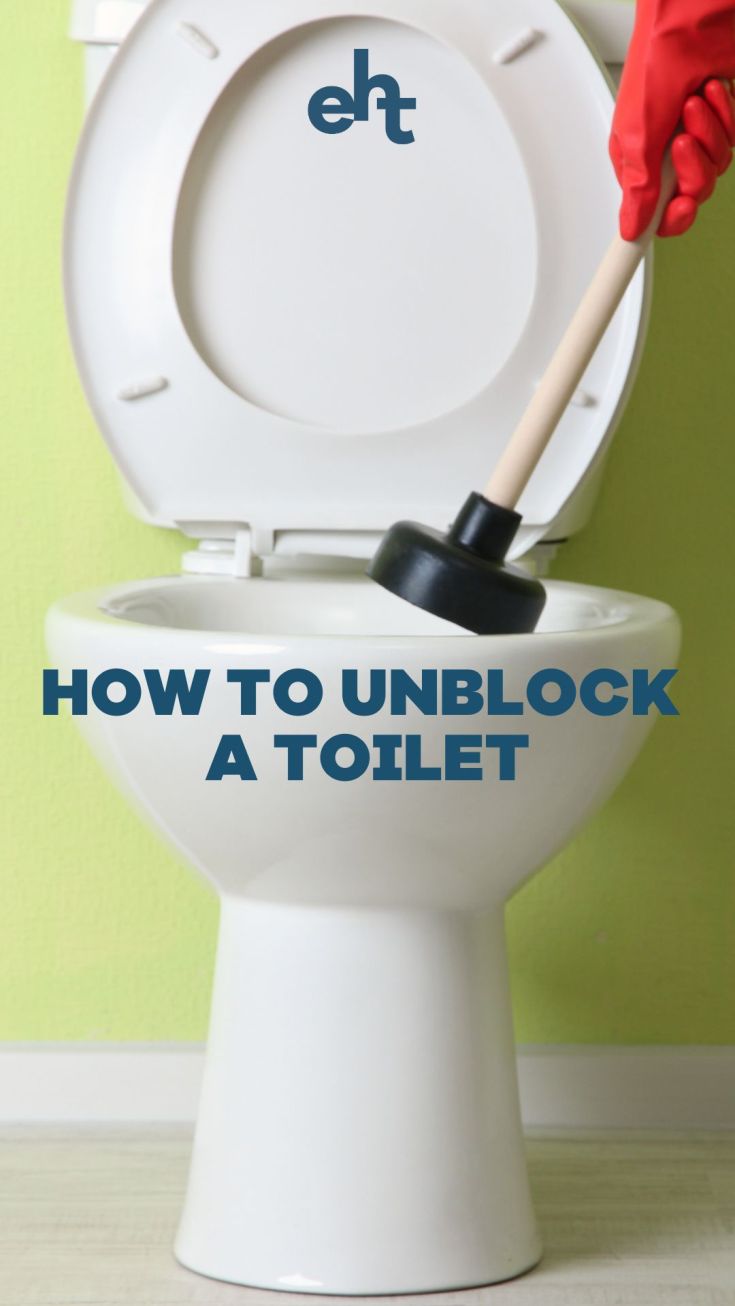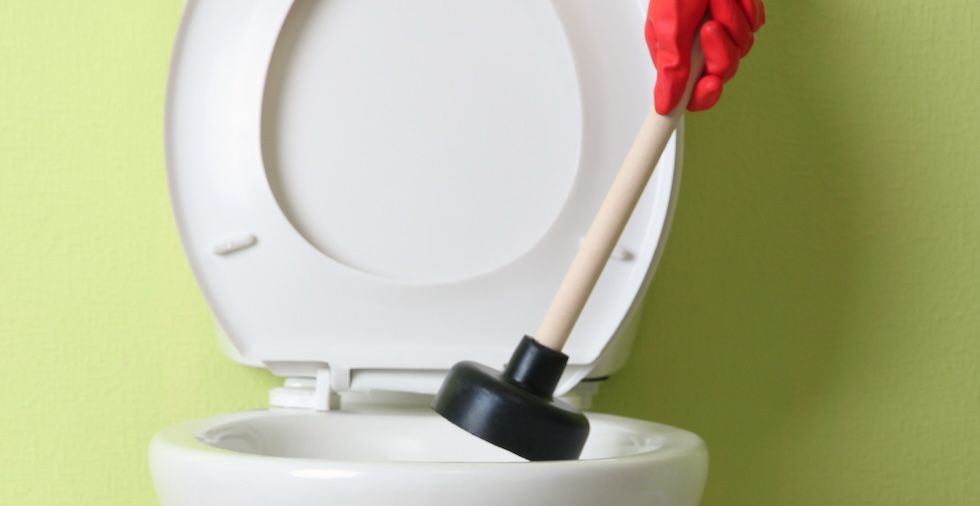- First up, stop the water
- How to unblock the toilet with a plunger
- How to unblock the toilet without a plunger
- How to unblock a toilet with bigger tools
- What to do if the toilet is still overflowing
- When to call a plumber
It's hardly the nicest of subjects, but it can happen to the best of us. Discovering that your toilet is blocked is the stuff of nightmares. Perhaps someone used too much toilet paper, or maybe something that shouldn't have been flushed is now clogging the pipes. Whatever the problem, you want to address it as soon as possible.
First things first, you don't need to panic or rush to call a plumber. The truth is that most toilet blockages can be resolved at home with basic tools. Yes, you may be able to resolve the issue using items you already have at home. Whether it's a minor clog or a full-on catastrophic mess, we have everything that you need. Let's dive in and get started.
First up, stop the water
Before attempting any fixes, you must first stop the water from rising. You can't even approach this when the water is still coming out thick and fast. Here's what you need to do:
Step one:
First, take the lid off the toilet tank and press the rubber flapper (that round bit at the bottom of the tank). That'll stop more water from entering the bowl.
Step two:
Turn the shut-off valve (usually located behind the toilet near the floor) to stop the water flow altogether. Doing that means that the water won't keep coming when you're trying to fix things. Now you can focus on the problem without worrying about the bathroom flooding.
How to unblock the toilet with a plunger
If you've got a plunger, you're already ahead of the game. This is the quickest and most effective way to clear most toilet clogs. You can use it to address the issue quickly.
You'll need:
- Toilet plunger
- Rubber gloves
- A bucket of hot water (not boiling)
Step one:
First, warm the rubber part of the plunger in hot water to soften it. You can do that by dipping it into the water for a few seconds. That helps it seal better.
Step two:
Next, place the plunger over the hole in the toilet bowl. Ensure it completely covers the hole and is submerged in water.
Step three:
Once you've done that, push down and pull up firmly, keeping the seal tight at all times. Do this around 10 to 15 times. You should feel some resistance here.
Step four:
Now, lift the plunger. If the water starts to go down, you're winning. That's good news.
Step five:
Repeat the process if needed. Don't flush again until the bowl has mostly emptied. Once you've cleared the toilet blockage, give everything a proper clean.
How to unblock the toilet without a plunger
Don't have a plunger handy? Don't panic. There are other options you can try. Try one of these home remedies using stuff you probably already have.
Hot water and washing-up liquid method
If you're dealing with a softer clog, you can use hot water and washing-up liquid to get the job done. Let's take a look at the steps you need to take:
Step one:
Start by pouring about half a bottle of washing-up liquid into the toilet bowl. Don't scrimp on the washing-up liquid here. Keep it flowing.
Step two:
Now, follow it with a whole bucket of hot water. You don't need the water to be boiling, as this can be dangerous and may cause the bowl to crack.
Step three:
When you've done that, let it sit for 20 to 30 minutes so the soap can work on the blockage. If the water level starts to drop, give it a flush, and you should be done.
Bicarbonate of soda and vinegar method
Looking for something a bit different? This fizzy combo could be the answer. Bicarbonate of soda is one of the best cleaning products you'll find. Here's what to do:
Step one:
Start by pouring one cup of bicarbonate of soda into the toilet bowl.
Step two:
Next, add two cups of white vinegar slowly so it doesn't bubble over too quickly.
Step three:
Finally, wait about 30 minutes for the reaction to settle—i.e. stop bubbling. Then add a bucket of hot water and wait again. Then flush to check if it's cleared.
How to unblock a toilet with bigger tools
Dealing with a blockage that simply won't budge. It happens. Here are some methods you may choose to try, using larger tools.
The toilet auger method
The toilet auger, also known as a toilet snake, is a long, flexible tool designed to push through stubborn clogs. Here's what you'll need to do:
Step one:
To begin, insert the end of the auger into the toilet drain until it cannot be pushed any further.
Step two:
Next, turn the handle clockwise to break through whatever's stuck. You might feel a slight resistance here, but keep going.
Step three:
Once the tool moves freely around, the job is done. You can slowly pull it back out. Flush the toilet to check if it's sorted.
The wire coat hanger method
If you don't have an auger, you can try this method as a substitute. Grab a wire coat hanger—a metal one—and then get to work.
Step one:
To get moving, you need to straighten out a wire coat hanger and bend one end into a small hook. Use some force here.
Step two:
Next, you should gently feed it into the drain and move it around. Try to hook or loosen the blockage with the hanger. Be careful not to scratch the bowl. Then flush and see if it worked.
What to do if the toilet is still overflowing
If you switch the water back on and it continues to overflow, that's bad news. You might be tempted to flush the toilet again, but don't make this mistake. You might end up with a real flood.
Instead, you should turn the water off again ASAP. Then, use a small bucket to scoop out the water and pour it down another drain, such as the shower or bath. Once the water level drops, try one of the methods above to unblock the drain again, or call a plumber.
When to call a plumber
Sometimes, you need to call in the professionals. If you've tried everything and nothing has worked, or the toilet keeps blocking again and again, you need to take action.
It could be a sign that there's a deeper issue in your drainage or pipes. Should that be the case, you don't want to ignore the problem. The sooner you take action, the better.
Unblocking your toilet is no fun, but it's a necessary task. If you're experiencing this issue, consider one of our many DIY solutions. These should help you resolve the problem without needing to pay for an expensive plumber's call-out. Of course, if you can't unblock the toilet, you'll need to call a professional sooner rather than later.
Q&A
Did we miss something? If you still have questions, please refer to our frequently asked questions below.
How can you unblock a toilet without a plunger?
It's easier than you think. First, try pouring in washing-up liquid and hot (but not boiling!) water. If that doesn't work, try baking soda and vinegar, or use a coat hanger to poke at the blockage.
How can I unblock my toilet quickly?
If you've got a plunger, you should 100% use that. Add some hot water and soap to help soften things up first. Plunging usually works within minutes.
How do I unblock a badly blocked toilet?
You can try using a toilet auger to reach deeper into the pipes. The tool is designed to handle more challenging clogs than plungers or DIY tricks.
How do I unblock a toilet that's full to the brim?
Scoop out some water first. Once the level drops, you can then use hot water and washing-up liquid or plunge it properly.
Does hot water help unblock a toilet?
Yes, it does… as long as it's not boiling. It softens any waste and toilet paper, which helps everything move along.
Can I use a drain unblocker in a toilet?
No. While this may seem like an obvious move, most drain unblockers are too harsh and can damage your toilet or pipes. That will lead to a more expensive plumber's visit later on. You should use the methods we've shared instead.
Did we help you clear the blockage? Let us know in the comments below!


Leave a Reply